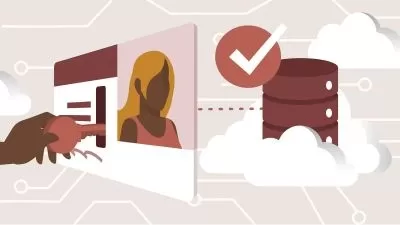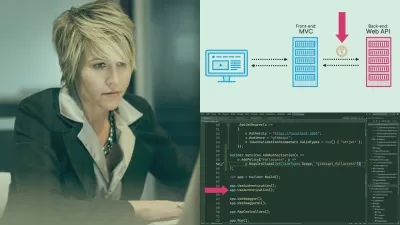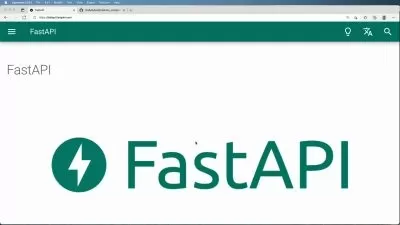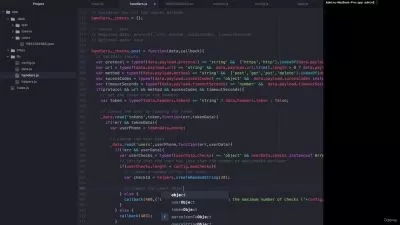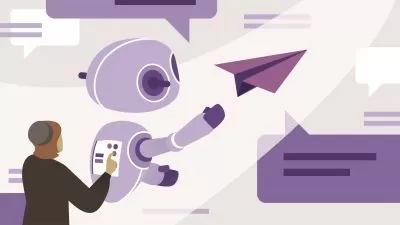Minimal Web API Fundamentals in .NET 6/7
Paul D. Sheriff
4:24:06
Description
Learn Minimal Web API, Security, CRUD, CORS, Swagger and Reusability.
What You'll Learn?
- What is a Minimal Web API?
- Build a Minimal Web API Project
- Use PostMan and Swagger to Test API Calls
- Using the MapGet(), MapPost(), MapPut() and MapDelete() Methods
- Build a Router Base Class to Simplify Your Minimal APIs
- Add Logging to your Web API Calls
- Add Exception Handling to your Web API Calls
- Develop a Complete Set of CRUD APIs
- Call your Web APIs from JavaScript/jQuery
- Add CORS to Allow Cross-Domain Calls
- Securing Minimal Web APIs
- Creating Asynchronous API Calls
Who is this for?
More details
DescriptionUsing Web APIs, you can write code to expose just what you want to the outside world. Traditionally you used MVC with controllers to create Web APIs. Starting with .NET 6, Microsoft released a new method for creating Web APIs called the Minimal Web API. This new approach is simpler than MVC. In this course you learn how to use these minimal calls and how best to architect them to provide scalability and ease of maintenance. Even if you have never created a Minimal Web API before, this course guides you step-by-step through the entire process.
In this course you are provided with an overview of the new Minimal Web APIs paradigm. You build a Minimal Web API project and learn to consume Web APIs using Postman and Swagger. You learn the standard methods for getting, inserting, updating, and deleting data. You build a set of CRUD APIs to allow a developer to interact with your database. You then build a set of classes that make working with minimal APIs much simpler. You are going to see how to call your APIs via JavaScript/jQuery and how CORS is added to allow cross-domain access. You learn the basics of securing your minimal Web APIs. You also learn to use the Entity Framework to communicate to a database, and even perform asynchronous Web APIs.
All the demos you are shown during this course are backed up with a set of labs for you to perform. Walking through these labs step-by-step ensures that you understand the concepts illustrated in each lesson. You are going to see approximately 90 demos, be asked over 65 questions, and perform over 75 hands-on labs.
Join Paul D. Sheriff, one of the best instructors in the industry, on your journey to becoming a C# Web API developer using the Minimal Web API.
Who this course is for:
- If you are a C# web developer, at some point you are probably going to need Web APIs. If you are a front-end developer using Angular, React, JavaScript, jQuery, etc. you should be familiar with how to create Web APIs so you can consume them effectively. If you are already developing Web APIs using MVC, this course exposes you to the new Minimal Web APIs. If you are a development manager or a QA person who workings with developers creating Minimal Web APIs, after watching this course you will be better equipped to work with those developers.
Using Web APIs, you can write code to expose just what you want to the outside world. Traditionally you used MVC with controllers to create Web APIs. Starting with .NET 6, Microsoft released a new method for creating Web APIs called the Minimal Web API. This new approach is simpler than MVC. In this course you learn how to use these minimal calls and how best to architect them to provide scalability and ease of maintenance. Even if you have never created a Minimal Web API before, this course guides you step-by-step through the entire process.
In this course you are provided with an overview of the new Minimal Web APIs paradigm. You build a Minimal Web API project and learn to consume Web APIs using Postman and Swagger. You learn the standard methods for getting, inserting, updating, and deleting data. You build a set of CRUD APIs to allow a developer to interact with your database. You then build a set of classes that make working with minimal APIs much simpler. You are going to see how to call your APIs via JavaScript/jQuery and how CORS is added to allow cross-domain access. You learn the basics of securing your minimal Web APIs. You also learn to use the Entity Framework to communicate to a database, and even perform asynchronous Web APIs.
All the demos you are shown during this course are backed up with a set of labs for you to perform. Walking through these labs step-by-step ensures that you understand the concepts illustrated in each lesson. You are going to see approximately 90 demos, be asked over 65 questions, and perform over 75 hands-on labs.
Join Paul D. Sheriff, one of the best instructors in the industry, on your journey to becoming a C# Web API developer using the Minimal Web API.
Who this course is for:
- If you are a C# web developer, at some point you are probably going to need Web APIs. If you are a front-end developer using Angular, React, JavaScript, jQuery, etc. you should be familiar with how to create Web APIs so you can consume them effectively. If you are already developing Web APIs using MVC, this course exposes you to the new Minimal Web APIs. If you are a development manager or a QA person who workings with developers creating Minimal Web APIs, after watching this course you will be better equipped to work with those developers.
User Reviews
Rating
Paul D. Sheriff
Instructor's Courses
Udemy
View courses Udemy- language english
- Training sessions 102
- duration 4:24:06
- Release Date 2023/04/26








